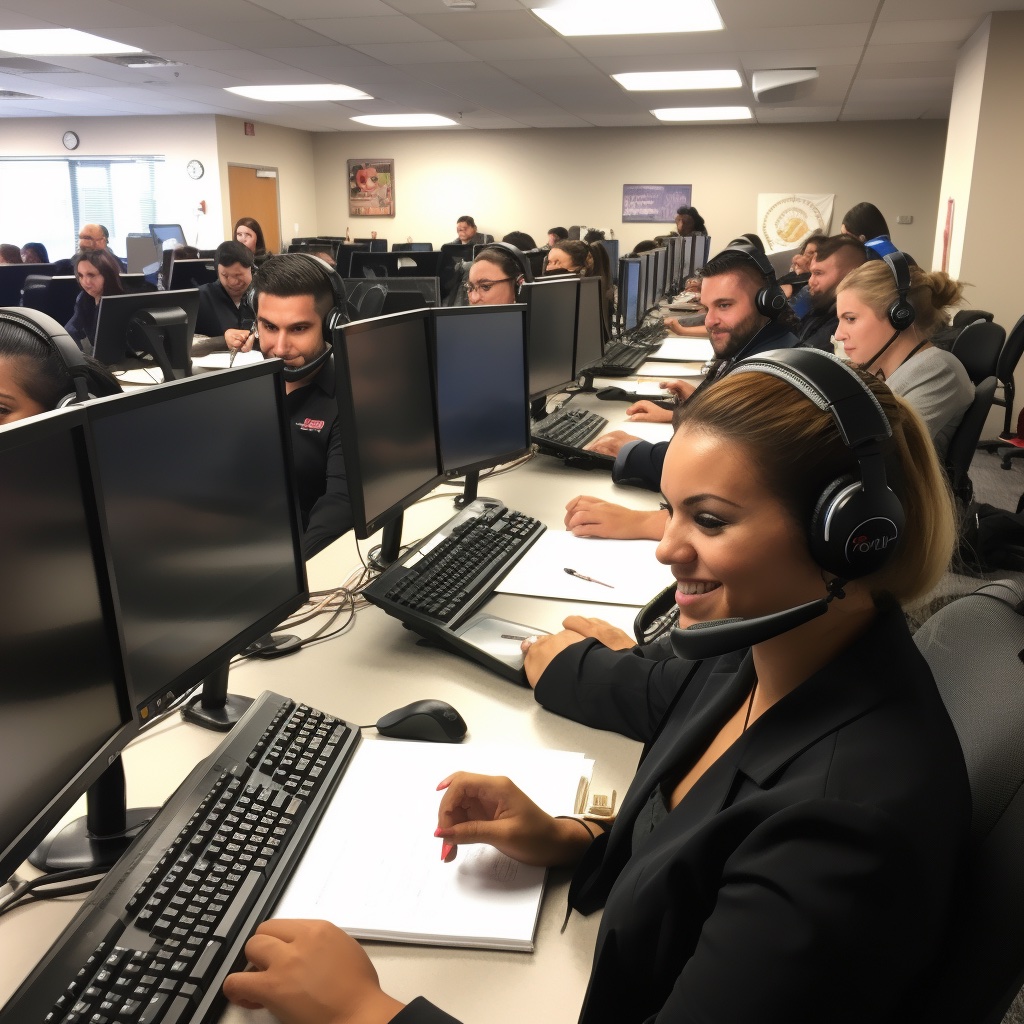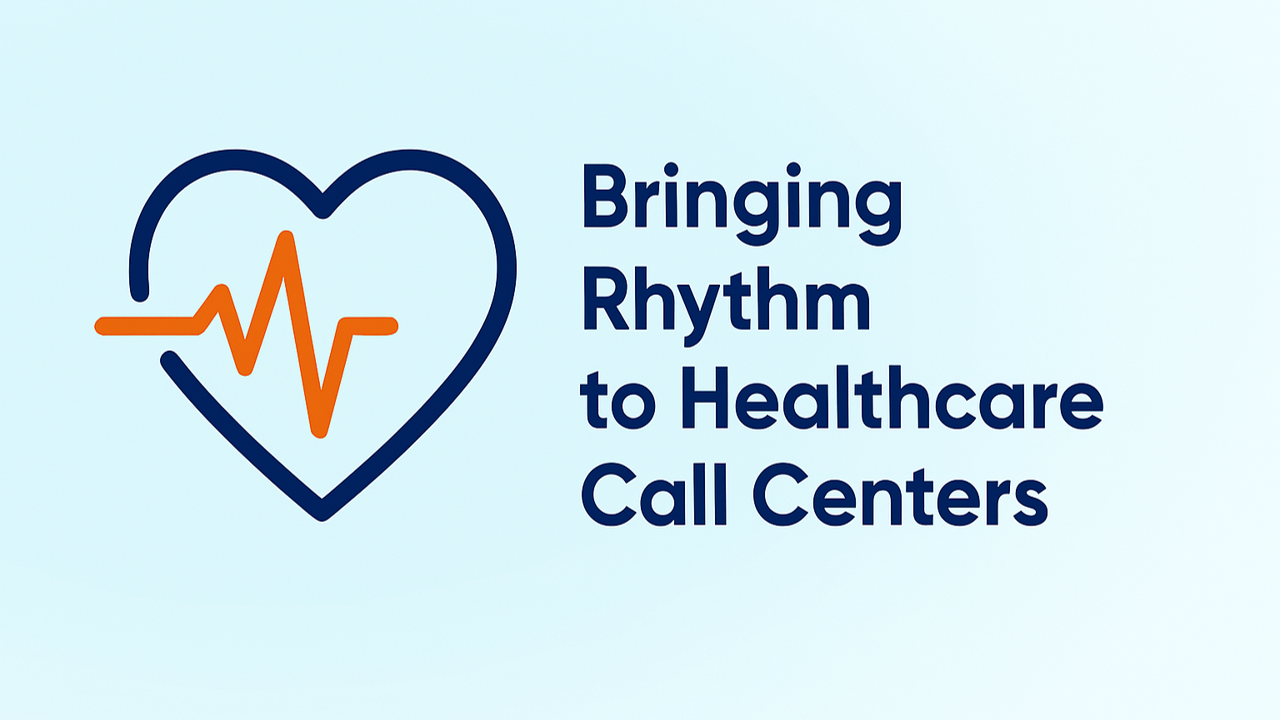
Training time is a vital operational metric for healthcare call center agents
Agents are an essential, if sometimes under-appreciated, component of healthcare call centers. The efficiency of your agents determines the dynamism of your entire patient access operation. Which is why the following problems, if you have them, decimate revenue, care, and patient satisfaction.
Do you experience any of these problems?
- Your agents, even after their exhaustive initial training, must shadow experienced agents for weeks and be coached for months to learn the ropes and pick up tidbits of tribal knowledge?
- Are you regularly reinventing processes from the top down and constantly redesigning training procedures?
- Is your patient access operation marred by relentless turnover, and does it feel chaotic?
These problems exacerbate onboarding headaches and deplete precious resources. Which is why expediting agent training time is imperative for healthcare call centers to operate at peak efficiency, create documentable processes, and maximize existing resources.
When call center agents are primed, confident, and ready to dominate in 2 days, rather than in 2 weeks or 2 months, the results are remarkable:
- Attainment of key performance indicators at your contact center: agents can take on more call volume and thus help more patients; average response time improves; first call resolution increases; average abandonment rate drops.
- Excellent customer satisfaction scores, stellar patient care, and better outcomes.
- Less pressure on call center managers.
- Cutting-edge patient data management.
- Faster and more accurate appointment scheduling.
What's the average time it takes your healthcare call center to train its agents?
If your training takes more than 3 days, then it takes too long. To shorten your training time, you may have tried some of these false solutions, which never work:
- Increase staffing numbers.
- Retrain your personnel.
- Reduce hours of operation.
These solutions don't address the root cause of your training woes. "Tedious Training," as we call it at Keona Health, arises from overly-complex workflows and undocumented tribal knowledge, which are a nightmare for new agents to learn and are difficult for experienced agents to teach. Standardization of your processes is thus the best way to streamline your training.
Simple Standards empower your organization to train its agents in 2 DAYS — the holy grail of call center agent training metrics
Contact centers can train agents in 2 days. We've seen it. And after this lightning fast training, these agents go on to be excellent performers.
The solution to Tedious Training is Simple Standards: a standardized set of guidelines your agents rely on to perform their tasks. Simple Standards provide an easy, cloud-based reference manual, accessible in real-time, for each employee. This manual guides your agents, during their calls, to the correct action: responses to patient inquiries, scheduling appointments, communication with providers, and more.
Thanks to clear, uniform instructions on how to execute tasks, new agents rapidly learn their responsibilities and quickly become productive, which eliminates the need for weeks of training and shadowing.
How to build Simple Standards
First, create a single comprehensive digital guide that walks your agents through each procedure. For optimal efficiency, agents need to have one place they can go to complete processes, no matter what they are tasked with.
Second, define standard formats for instructions that make it easy for agents to read or even skim. The goal here is clarity and simplicity. Identify at least four elements: decisions to make, scripting, information to lookup, and services to perform. Think through each element to define how to standardize that format, including look, feel, colors, links, etc.
Third, add visual aids and queues. Define standard colors and even include screenshots where helpful.
Fourth, eliminate and streamline steps. Anywhere you can remove redundant work will reduce the time it takes agents to understand and follow the process.
Fifth, get feedback and iterate. Watch agents, talk to agents, and ask for agent feedback on each process. Also analyze the results and talk to providers. You should see quality improve, which means that provider complaints will drop tremendously.
Once the document is complete, make it easily accessible to all employees in a digital format.
Simplified Standards don't just speed up training—they also:
- Enhance first call resolution rate and optimize call quality.
- Improve the average handle time of inbound calls.
- Reduce the number of abandoned calls.
- Increase retention rates for your agents.
- Ensure HIPAA compliance at all times.
Further, to ensure your organization reaps maximal benefits from Simplified Standards, follow these best practices:
- Hire the right people who will own their performance.
- Teach your agents to always be compassionate.
- Regularly gather feedback from your staff and create actionable insights.
- Invest in call support software that is specifically designed to harmonize complex patient access processes.
- Put patients first, and don't ignore your customer satisfaction rate.
- Conduct post call surveys to gain insight and improve the patient experience.
- Build HIPAA security protocols directly into your workflows so your organization is automatically in compliance at all times.
- Integrate your contact center with a healthcare CRM to improve average response time, first call resolution, talk time, and other key metrics.
To take a deep dive into how you can optimize your patient access operation and solve staffing problems ==>
Posted By

Stephen Dean is COO of Keona Health, where he’s spent 13 years building AI systems that transform patient access. Before “agentic AI” was a term, his team was deploying autonomous systems that now handle millions of patient conversations annually.
Related Post
November 19, 2024
heading into 2025, healthcare organizations face increasing pressure to digitize...
October 23, 2023
imagine your call center as the heart of your healthcare system. every patient flows...



